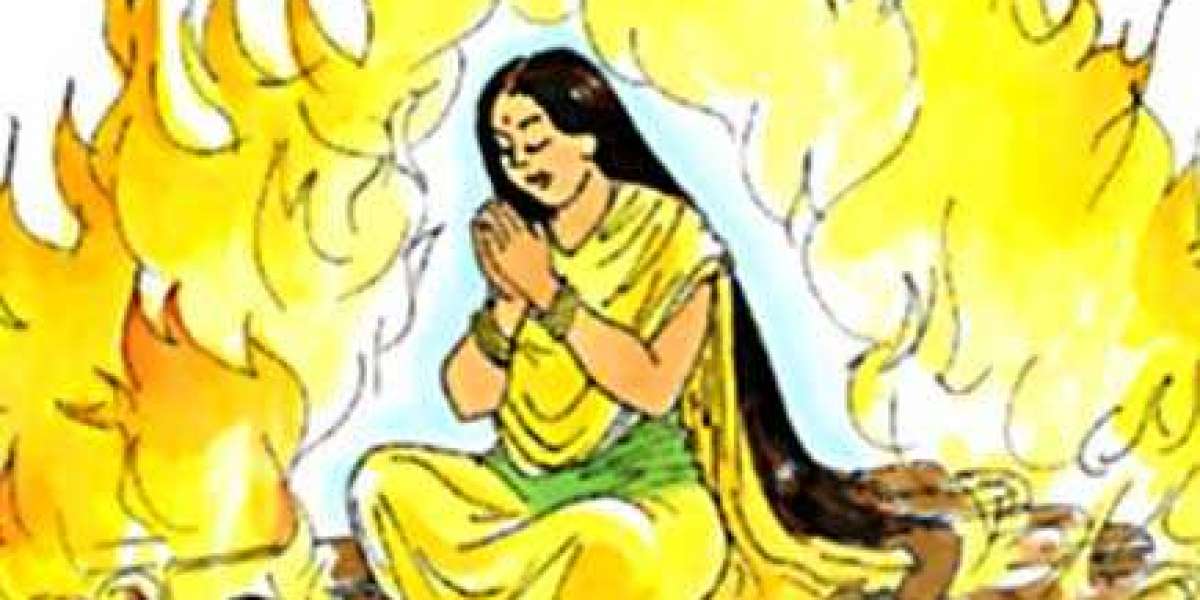The ancient Hindu tradition called 'sati' wherein a widow would burn herself to death on her husband’s pyre, this practice is obviously banned in India on 4 December 1829 by the passage of The Bengal Sati Regulation by then Governor-General of India, Lord William Bentinck. Initially, it was a voluntary act that was considered to be quite courageous and heroic but it later became a forced practise. 'Sati' originally meant a woman who performs the act of immolating herself after her husband's death. The word is derived from the Sanskrit word 'asti' which means 'she is pure or true.’ Many people relate this practice in mythological terms from Sati the name of the wife of Lord Shiva. Sati's father never respected Shiva and often despised him. To protest against the hatred that her father held for her husband she burnt herself. While she was burning herself she prayed to be reborn as Shiva's wife again and she was reborn as 'Parvati.’ Many people usually justify the practice of ‘Sati’ by relating it to this tale but when Sati burnt herself she wasn't a widow and this practice is quite unrelated to this tale. Although this practice does not have any Vedic sanction, became prevalent in many parts of India.
This practice of “Sati” traces back in 4th century BC. It was symbolised as the closure of marriage. It was a voluntary act which was seen as a sign of being a dutiful wife, a woman follows her husband to the afterlife. Therefore it was considered as the greatest form of devotion of a wife towards her dead husband. With the passage of time, it became a forced practice. Traditionally, a widow had no role to play in society and was considered a burden. So, if a woman had no children who could support her, she was pressurised to accept Sati. The evidence of this practice is trace between the 5th and the 9th century AD where the windows of the kings performed this sacrifice. Initially, it was confined to royal families of the Kshatriya caste but later it spread to the lower castes becoming widely practised among all social classes.
Raja Ram Mohan Roy is said to be the man behind the abolition of this social evil. In the year 1829 Sati was banned for the first time by the Bengal Provincial government which was later on followed by the other provinces and princely states. Queen Victoria in the year 1861 imposed the general ban on the Sati practice in India. Presently the commission of Sati Prevention Act, 1987 is in force. This act speaks to prevent Sati practice within the territory of India. The act also prohibits the force as well as voluntary burning or burying alive of a window and also prohibits its glorification. Many supreme court lawyers are found saying that a need still exist to enact legislation which would craft various social evil at the Grass root level so that the development is witnessed amongst all. The act defines Sati as the burning or burying alive of any widow along with the body of her deceased husband or any other relatives or with any article, object or thing associated with the husband or such a relative. Or the burning or burying alive a woman along with the body of a relative irrespective of whether such burning or burying is claimed to be voluntary on the part of the widow or that women or otherwise. The State Government of Rajasthan passed the Sati (Prevention) Act in 1987 whereby the voluntary or forced burning or burying alive of widows and the glorifying of such acts including the participation in any procession of Sati becomes punishable. This act became an act of the Indian parliament in 1988 when the commission of Sati (Prevention) Act, 1987 was enacted.







